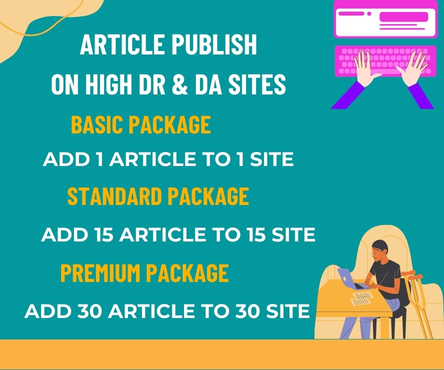
Miami International Airport (MIA) is one of the busiest airports in the United States, welcoming millions of visitors each year. For many travelers, renting a car is the most convenient way to explore Miami and the rest of South Florida. Public transportation is limited, and ride-share costs add up quickly if you plan to move between beaches, shopping districts, and nearby attractions.
While renting a car at Miami Airport is straightforward, the process can also be time-consuming and costly if you are not prepared. With some planning, you can secure the right vehicle, avoid unnecessary expenses, and leave the airport quickly. This guide explains how to save both time and money when renting a car at Miami International Airport.
Understanding the Miami Airport Rental Car Center
Unlike some airports where rental counters are inside the terminal, Miami International uses a centralized Rental Car Center (RCC). The RCC houses more than a dozen major rental agencies, including Alamo, Avis, Budget, Enterprise, Hertz, National, and Thrifty.
To reach the Rental Car Center, you take the MIA Mover, a free automated train that connects the main terminal to the rental complex. The ride takes about five minutes, but you should factor in the time it takes to walk from your gate to the train and then to your rental counter.
Why This Matters for Saving Time
- During peak travel periods, the Rental Car Center can be crowded.
- The walk, train ride, and wait at the counter can take 30 to 60 minutes.
- Being prepared with the right documents and a confirmed reservation speeds up the process.
Knowing what to expect helps reduce frustration and allows you to plan accordingly.
Book Early and Compare Prices
Rental rates at Miami Airport fluctuate depending on demand. Booking early usually results in lower prices, especially during busy travel seasons such as winter holidays, spring break, and summer.
How to Save Money
- Use comparison tools: Websites and apps like Kayak, Expedia, or AutoSlash allow you to compare rates across multiple companies.
- Check both airport and off-airport locations: Sometimes off-airport rental offices in Miami offer lower rates, though you need to factor in the cost of transportation to reach them.
- Look for coupons and membership discounts: AAA, Costco, and frequent flyer programs often provide rental discounts.
Booking early also gives you more choice in vehicle type. Waiting until arrival often means paying more for upgrades if smaller cars are sold out.
Choose the Right Vehicle for Your Trip
Miami offers a mix of urban driving, highways, and coastal routes. The vehicle you choose affects both cost and convenience.
- Compact cars: Best for solo travelers or couples, easy to park in South Beach, and the cheapest to rent and fuel.
- Sedans: Comfortable for families or small groups making day trips to Fort Lauderdale, the Everglades, or the Florida toyota rental.
- SUVs: Useful if you are traveling with more luggage, sports equipment, or a larger family. They also handle longer drives better.
- Convertibles: Popular in Miami for scenic drives, but they are usually more expensive and have less luggage space.
Choosing a car that fits your needs prevents overspending on unnecessary upgrades and reduces stress when loading luggage or navigating busy streets.
Understand Rental Requirements
Arriving unprepared at the rental counter can cause delays. Make sure you meet the standard requirements:
- Age: Most companies require drivers to be at least 21. Drivers under 25 may face young driver surcharges.
- Driver’s license: A valid license is required. International visitors may also need an International Driving Permit (IDP) if their license is not in English.
- Credit card: Most companies require a credit card in the driver’s name for the security deposit. Some accept debit cards but with restrictions.
- Insurance: You must show proof of coverage or purchase insurance at the counter.
Having these documents ready speeds up the process and avoids last-minute fees.
Navigate Insurance Options Carefully
Insurance is one of the biggest sources of extra costs in car rentals. At Miami Airport, agents often encourage upgrades, which can quickly add to your bill.
Common options include:
- Collision Damage Waiver (CDW): Covers damage to the rental car.
- Liability Insurance: Covers injury or damage to other people and property.
- Personal Accident Insurance: Covers medical costs for you and your passengers.
- Personal Effects Coverage: Protects items inside the vehicle.
How to Save Money
- Check your credit card benefits: Many credit cards include rental car coverage if you use the card to pay.
- Check your auto insurance: If you own a car at home, your policy may extend coverage to rentals.
- Buy only what you need: Avoid duplicate coverage if you are already protected.
By confirming your insurance coverage in advance, you can decline unnecessary add-ons and save both time and money at the counter.
Avoid Prepaid Fuel Programs
Rental companies often offer prepaid fuel plans where you pay for a full tank upfront. While convenient, these programs usually cost more unless you return the car empty. Most travelers end up paying for fuel they did not use.
Best Practice
- Fill the tank yourself before returning the car.
- Use apps like GasBuddy to find the cheapest gas stations near the airport.
- Keep your receipt as proof in case of disputes.
This simple step saves money and avoids inflated refueling charges.
Be Smart About Tolls
South Florida has many toll roads, especially around Miami, Fort Lauderdale, and on the drive to the Florida Keys. Most tolls are collected electronically through the SunPass system.
Rental Company Toll Programs
Many rental agencies equip cars with SunPass transponders but charge daily convenience fees on top of toll costs. These fees can add up quickly.
How to Save Money
- Ask if your rental company allows you to bring your own SunPass Mini, which can be purchased at local stores.
- Consider rental companies that offer flat daily toll programs with no hidden fees.
- Plan routes to avoid unnecessary toll roads when possible.
Managing tolls wisely prevents unexpected charges on your credit card after the trip.
Inspect the Vehicle Before Leaving
Taking a few minutes to inspect your rental can save money and disputes later.
- Check the body, windows, and tires for damage.
- Take photos or videos of any scratches or dents.
- Confirm that the fuel level matches the rental agreement.
Documenting the car’s condition ensures you are not charged for damage you did not cause.
Return the Car on Time
Late returns are one of the most common extra charges. Rental companies often charge by the hour, and returning even 30 minutes late can result in a full day’s fee.
Tips for On-Time Returns
- Plan your trip to allow time for traffic, which is common near Miami Airport car rental.
- Refuel before arriving to avoid delays.
- Follow signs to the Rental Car Center to avoid last-minute confusion.
Returning on time saves money and prevents stress during your departure.
Consider Alternatives to Airport Rentals
While renting at the airport is convenient, it is not always the cheapest option. Off-airport rental offices in Miami sometimes offer lower rates and fewer fees.
- Pros: Lower prices, less crowding, and potential free shuttles from the airport.
- Cons: Extra time and effort needed to reach the location.
If your schedule allows, compare prices at both airport and city locations before booking.
Final Thoughts
Miami International Airport is a gateway to some of Florida’s most exciting destinations. Renting a car here is the easiest way to explore Miami’s beaches, cultural districts, and nearby attractions like the Florida Keys or the Everglades. However, without preparation, the process can be slow and costly.
By booking early, choosing the right vehicle, understanding insurance, and managing tolls and fuel wisely, you can save both time and money. With a reliable rental car, you will spend less time at the counter and more time enjoying everything Miami and South Florida have to offer.

